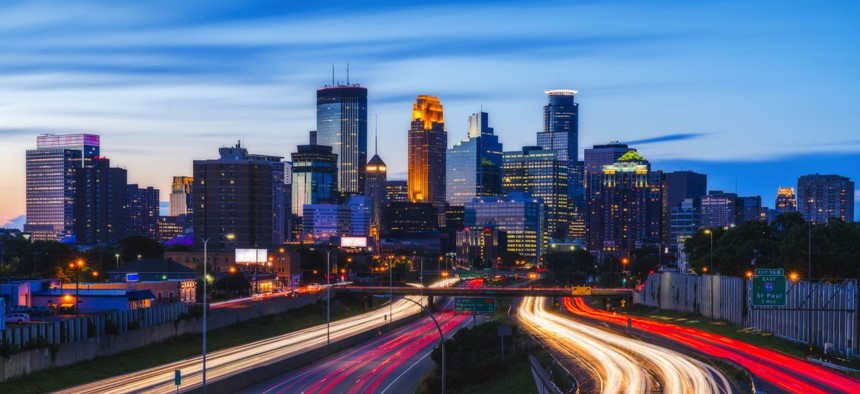Turning Trump’s Infrastructure Plan Into an Inclusive One

Minneapolis
“When you make the case properly, people are willing to pay into the system that reflects them.”
WASHINGTON — The Trump administration’s infrastructure plan does little to ensure the $200 billion in proposed federal investment will reach underserved communities, instead focusing on streamlining the permitting process for construction projects to within two years.
State departments of transportation already receive the vast majority of U.S. Department of Transportation funding, forcing localities to form partnerships capable of landing investments in inclusive infrastructure.
Quick wins are essential for local government to publicly demonstrate its commitment to economic equality, like Prince George’s County, Maryland exceeding its goal of involving minority-owned businesses in contracting.
“When you make the case properly, people are willing to pay into the system that reflects them,” said Stephanie Gidigbi, a policy and partnerships director with the National Resources Defense Council’s Healthy People & Thriving Communities Program. “For a very long time, our infrastructure system has not reflected the people who live in the communities that we’re trying to serve.”
Gidigbi spoke Tuesday in D.C., at the Brookings Institution’s Building Inclusive Infrastructure event, praising the Obama administration for its Sustainable Communities Initiative, which actively leveraged resources across federal departments to close local divisions.
With state governments controlling most of the available federal funds, it's Indy Chamber Chief Policy Officer Mark Fisher’s job to lobby Indiana’s Republican-run legislature for strategic investments in blue Indianapolis’ urban core. As part of Brookings' Inclusive Economic Development Lab, Indianapolis learned it had slid from the 53rd to the sixth-most economically segregated community in the country.
“A lot of people are blind to what is happening and how rapidly the impacts of deindustrialization have taken hold in Indianapolis,” Fisher said.
Indianapolis became addicted to federal Community Development Block Grant funds, but its “peanut butter approach” of spreading the money around to poorly run nonprofits yielded diminishing returns, he added.
The city isn’t alone.
Minneapolis is prosperous, but its metropolitan area has some of the worst racial, educational and unemployment disparities in the country.
“What we know is: If you’re a member of any of our communities of color, you have a harder time accessing our programs because our financial institutions in the market—these are not city-owned financial institutions, right—don’t lend as frequently to communities of color outside of home ownership,” said Shauen Pearce, the city’s economic development and inclusion policy director.
Instead of wasting time collecting data and compiling reports on how Minneapolis government might influence residents’ behavior, the city has taken a more proactive approach. If the target is improving employment among communities of color, City Hall need only engage the business community, which already has hundreds of vacancies.
The city established the Blue Line Coalition of local organizations to support its light rail extension and secure funding for the community.
Now Minneapolis is eyeing opportunity zones as a means to grapple with gentrification, designating areas around publicly-owned land, where the city has more control over incoming funds. Other places that made good opportunity zones were those with private sector interest or business development pipelines for catalyzing the market; financial institutions willing to accept higher risk; and stacked infrastructure needs like roads, power lines, grid systems, housing, and economic development.
Regional partnerships that unite cities and suburbs are best, Fisher said. Indianapolis’ integrated transportation policy spans a nine-county area with the goal of improving workforce mobility—particularly in underserved communities.
“This is not about charity; this is not about giving to poor people,” Pearce said. “This is about returning the investment that they’ve made since the beginning of our country.”
Dave Nyczepir is a News Editor at Government Executive’s Route Fifty and is based in Washington, D.C.
NEXT STORY: Tracking tech transfer agreements






